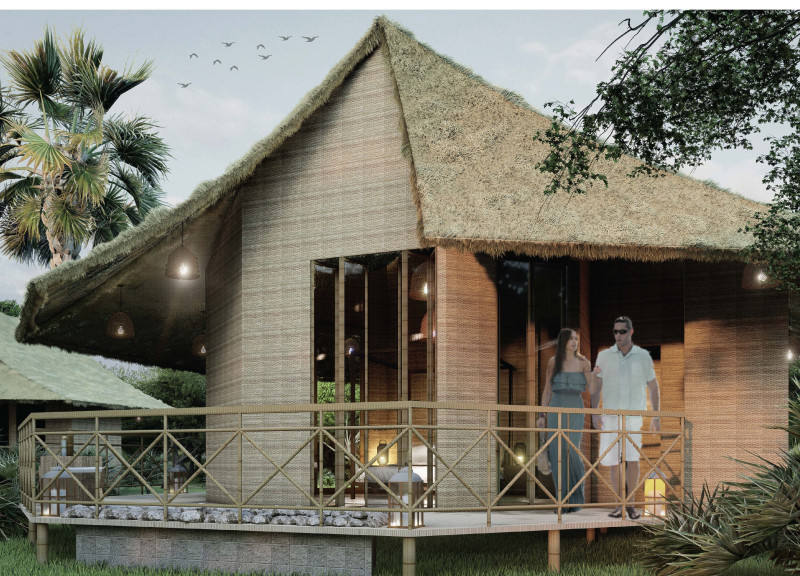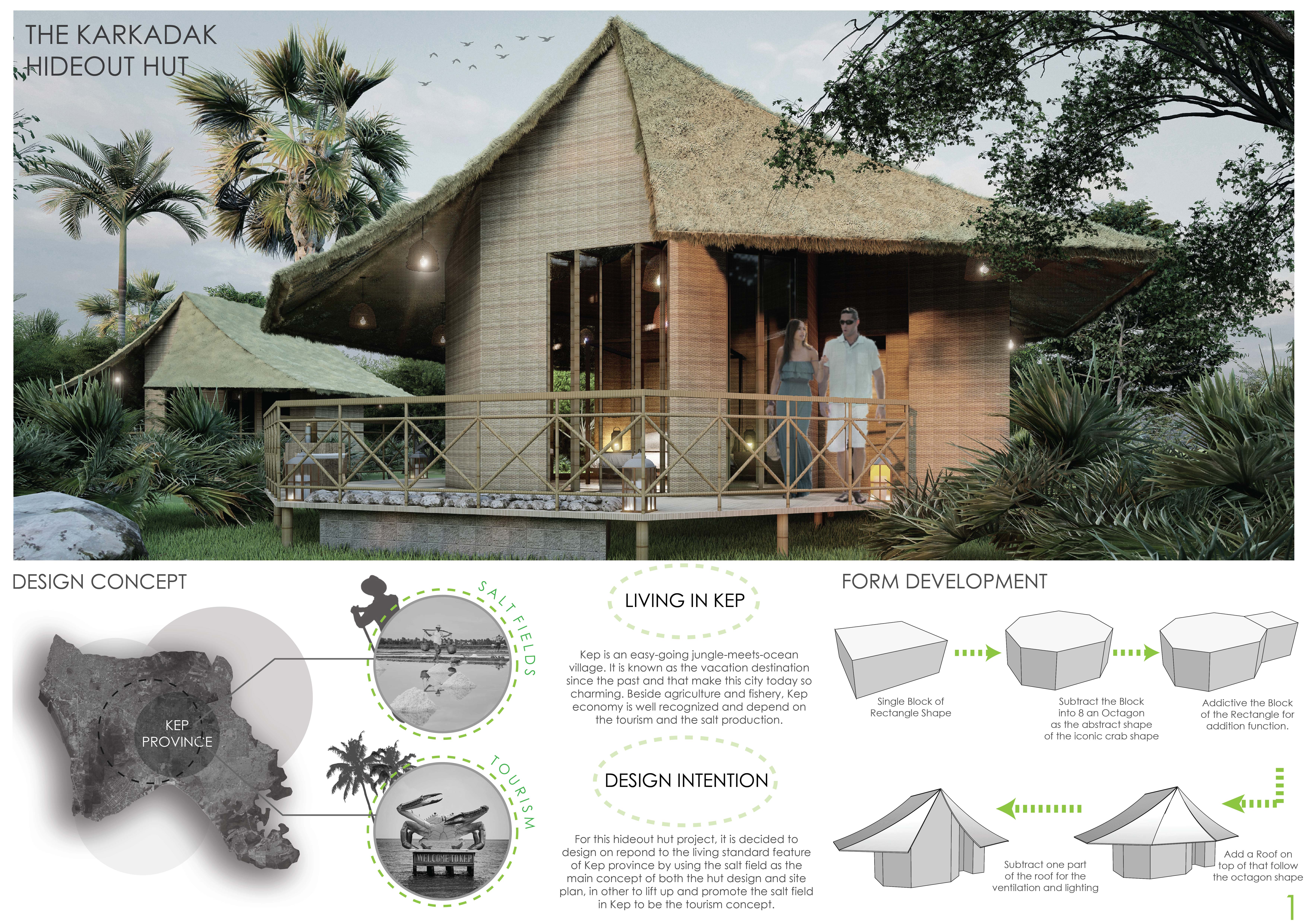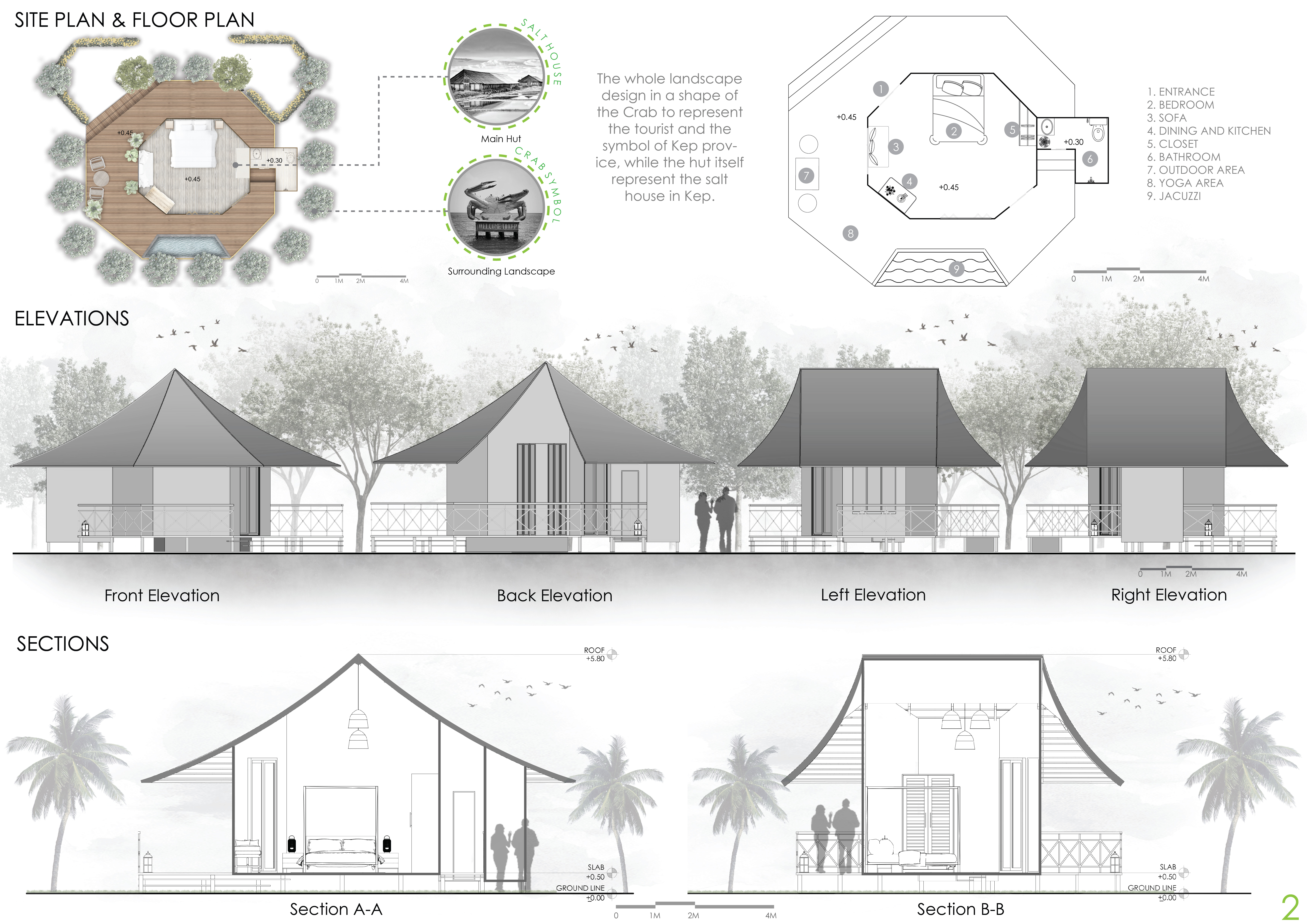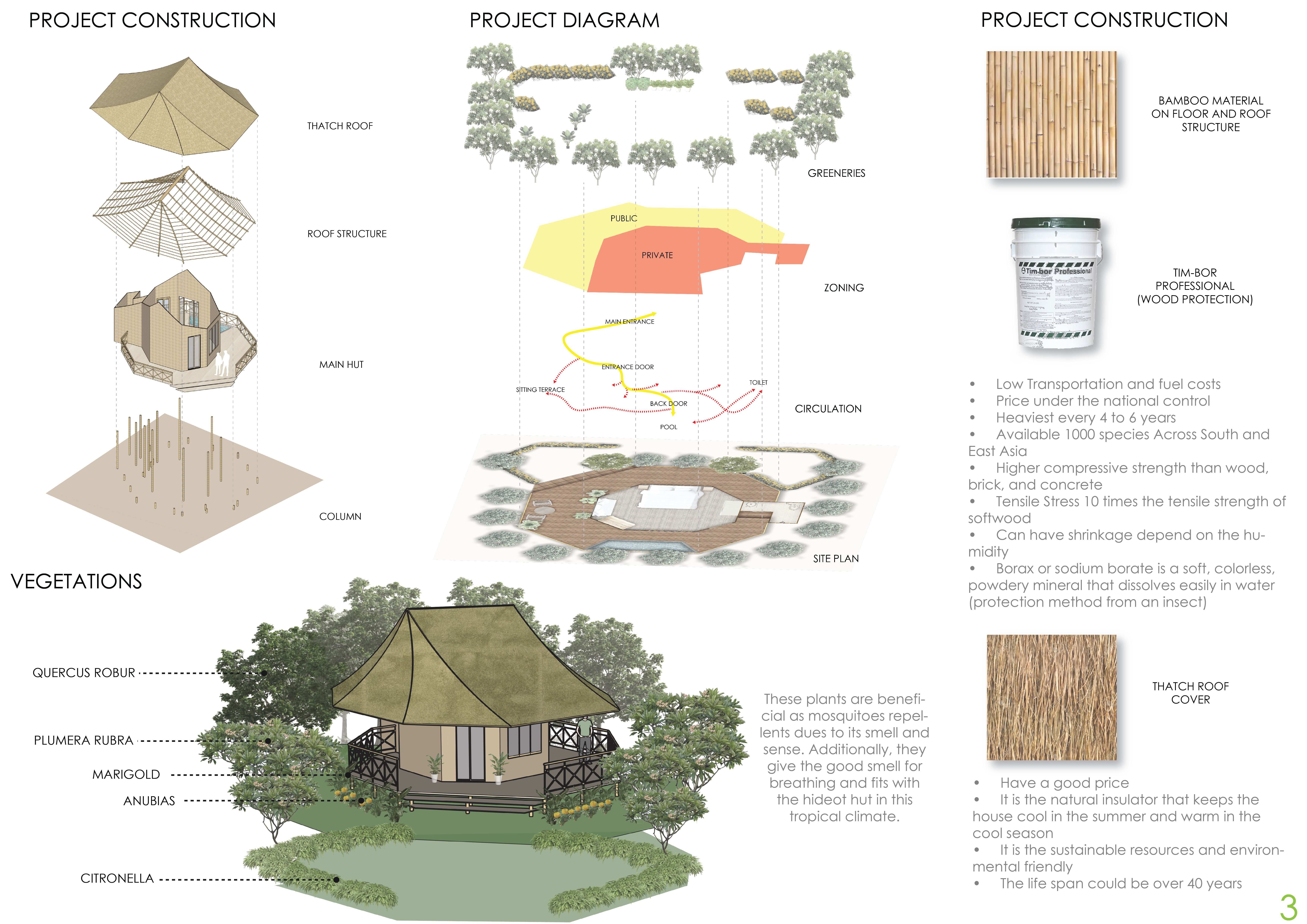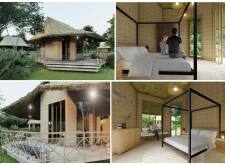5 key facts about this project
The Karkadak Hideout Hut is located in Kep Province, Cambodia, an area known for its natural beauty and tourist activities. The design serves as a retreat that promotes local culture and highlights the significance of the salt fields nearby. It aims to combine practicality with elements that reflect the local environment, creating a space that is comfortable for visitors while celebrating its surroundings.
Form Development
The structure begins with a rectangular base, which is then shaped into an octagon. This change reflects both contemporary architectural ideas and traditional influences. The octagon symbolizes the crab, an important part of the local identity and a feature that connects visitors to the area’s heritage.
Spatial Organization
Inside the hut, the layout is carefully arranged to separate public and private spaces. This organization makes it easy for people to move around and use the different areas. Entrances and communal spots are placed to take advantage of the scenic views, enhancing the connection between the building and the beautiful landscape of Kep. The design provides a functional and enjoyable experience within the setting.
Materiality
Choosing materials for the hut was focused on sustainability and durability. Bamboo has been used for both the roof and floor. This material is not only strong but also environmentally friendly. Tim-bor Professional is included for wood protection, contributing to the hut's long-lasting quality. These materials help to demonstrate a commitment to responsible construction while maintaining a link with local resources.
Design Details
A key feature of the hut is the way sections of the roof are removed to allow for airflow and natural light. This approach improves the comfort of the interior spaces and fosters a closer relationship between the indoors and the natural surroundings. The result is an inviting atmosphere that balances functionality with visual appeal, welcoming visitors to both relax and engage with their environment.


